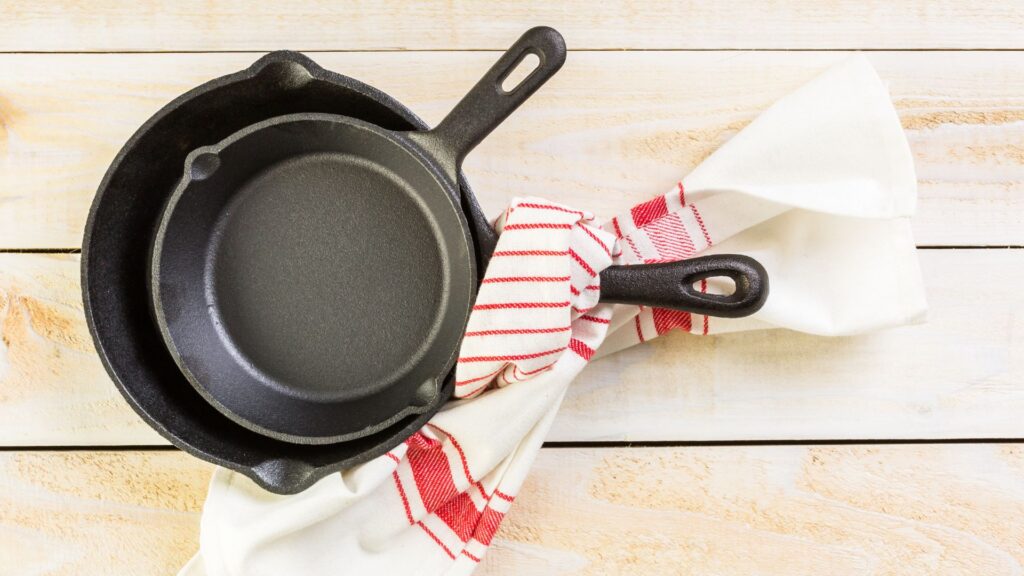
Caring for Your Cast Iron Cookware: A Non-Toxic, Wholistic Love Affair
My cast iron skillets are my kitchen comrades—rugged, faithful, and still searing strong after 20 years! These pans have roasted root vegetables, fried eggs, and seared grass-fed meats through countless wholesome meals, as loyal as the day we met. Some of these iron soldiers, I bought brand new, and some I picked up at garage sales and even the thrift store. Learn to treat them right, and they’ll be your wholistic allies for life.
As a wholistic living practitioner, I treasure cast iron’s non-toxic purity: no chemical coatings, just pure iron delivering clean, soulful cooking. The Wise & Wild Way celebrates this ancestral tool—here’s how to keep your skillet thriving so you can nourish your body and spirit.
Why Cast Iron Rules
Cast iron is the champion of cookware—built to endure, soak up heat, and tackle blazing temps from stovetop to campfire. Its rugged durability and heat-hugging magic make it the ultimate tool for ancestral foods, free from the toxic PFAS chemicals lurking in synthetic non-stick coatings like Teflon. Seasoning, a time-honored ritual, bakes fat into the iron, crafting a non-toxic, rust-proof surface that’s as pure as the primal table. Cook bold, live wild.
Seasoning Your Cast Iron: The Ancestral Ritual
Seasoning turns raw iron into a non-toxic powerhouse. It’s simple, sacred, and clean—here’s how:
Ingredients
- High smoke-point fat: Tallow or lard (preferably from grass-fed animals)
- Hot, soapy water (for initial cleaning only)
- A clean, lint-free cloth
Directions
Seasons one skillet
- Prep the pan: Before its first use (or if it’s rusty), scrub with hot, soapy water and a non-abrasive scrubber to clear factory coatings or grime. Rinse well and dry thoroughly—no water stays!
- Fire it up: Preheat your oven to 450°F, hot as a primal hearth.
- Oil it down: Slather tallow or lard everywhere—inside, outside, handle, all in. Use a cloth for a thin, even coat; too much fat gets sticky.
- Bake the magic: Place the pan upside down in the oven, with a baking sheet below to catch drips. Bake for one hour to fuse the fat into the iron, creating that slick, rust-proof layer.
- Cool it slow: Let the skillet cool in the oven to set the seasoning. Don’t rush it!
- Repeat if needed: One round usually does it, but if you’re a perfectionist (I’m too impatient for that!), repeat 1–2 times for an extra-smooth finish.
Pro Tip: Re-season every six months or when food sticks or cleaning gets tough. Cooking acidic foods like tomatoes? Season more often to keep that non-stick shine.
Cleaning Without Losing the Magic
Once seasoned, your cast iron is a non-toxic gem—don’t sabotage it with soap! Soap strips that clean seasoning, undoing your ritual. Here’s the Wise & Wild Way to clean:
- Wipe it clean: Under hot running water, use a soap-free cloth or chainmail scrubber to gently wipe out food and grease. Be thorough but kind—no harsh scouring.
- Dry it fast: Towel-dry lightly, then set on a medium-low burner until bone-dry and warm. Moisture breeds rust, so don’t skip this!
- Stuck-on food fix: If food clings (whoops, neglected a seasoning?), fill the pan with hot water, boil to loosen, and gently scrape with a spatula. Wipe with a wet cloth, dry on the burner, and re-season to restore the glory.
Pro Tip: After drying, rub a whisper of tallow or lard over the pan with a cloth for extra rust protection, especially in humid kitchens.
Tips for Cast Iron Longevity (The Wise & Wild Way)
- Choose ancestral fats: Use tallow or lard for seasoning, preferably from grass-fed animals; they’re clean, high-heat, and wholistic-approved. Tallow’s my go-to for its primal durability.
- Boost with iron: Cooking acidic foods like tomatoes in your skillet releases a whisper of dietary iron into your meals, as the acid gently leaches iron from the pan. This modest boost supports wholistic vitality the ancestral way, safe for most, though those with iron overload conditions like hemochromatosis (a disorder causing excessive iron buildup) should check with a doctor.
- Use a chainmail scrubber: It’s fierce on grime but gentle on seasoning, like a healer tending a wound.
- Store smart: Keep your pan dry with a paper towel inside to wick moisture. Stack carefully to protect that non-toxic shine.
- Cook wholistic: Sauté vibrant veggies or meats and fry eggs to build seasoning strength—think grass-fed burgers or quick-sautéed zucchini for clean, vibrant meals.
- Avoid long soaks or dishwashers: Water and harsh detergents are cast iron’s enemies, inviting rust and stripping seasoning.
- Embrace the patina: That dark, glossy sheen is your pan’s badge of honor, proof of non-toxic, wholistic feasts.
Connect with The Wise & Wild Way
The Wise & Wild Way is about cooking and living with purpose, vitality, and zero toxins (or as minimal as possible)—using tools that nourish body, mind, and soul. Click here for this cast iron care guide and make your skillet a wholistic ally.
Want more clean-living kitchen hacks and earthy wisdom—more no-nonsense insights delivered to your inbox? Sign up for my newsletter and explore Sharise Uncut. Let’s sear, nurture, and live like the kitchen’s the heart of our home—because it is.

